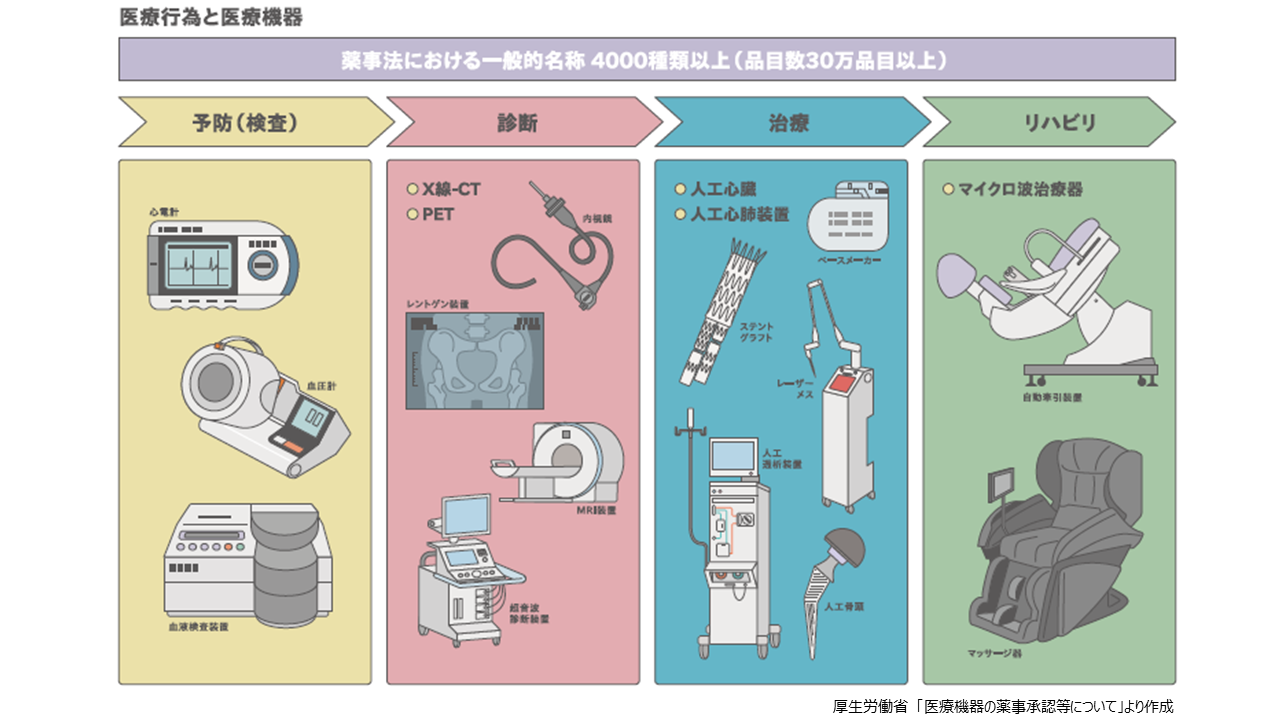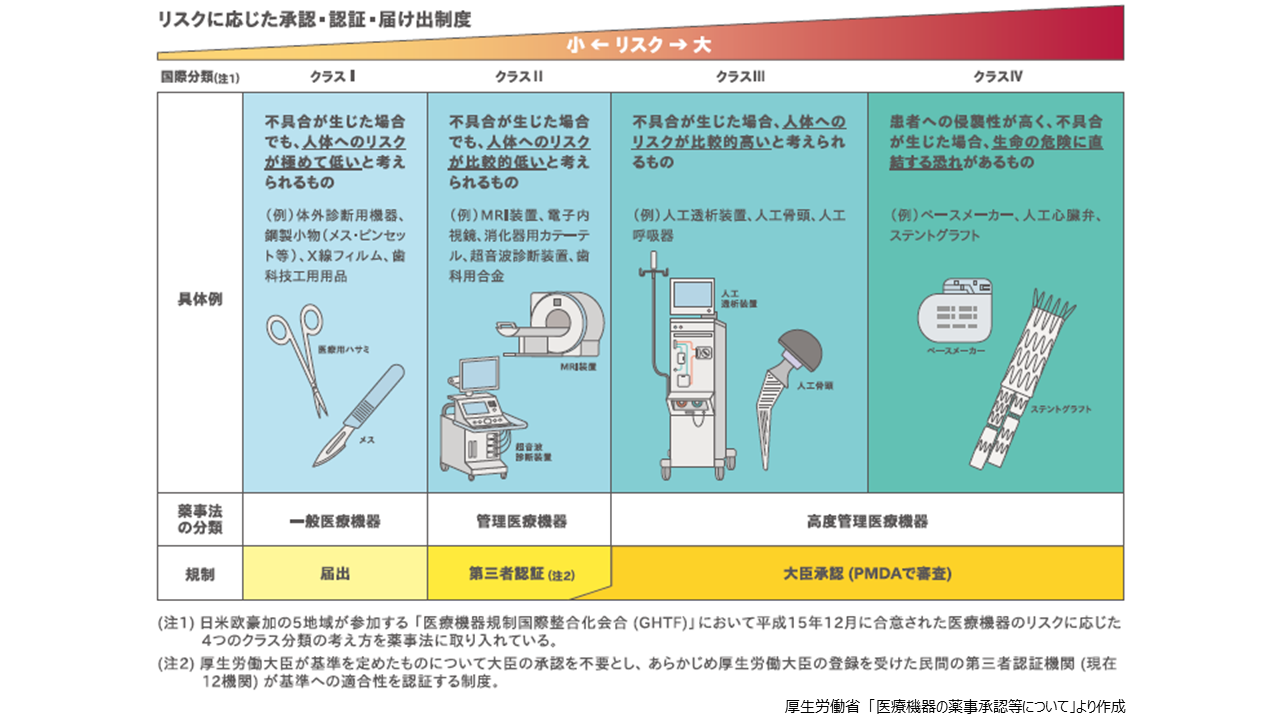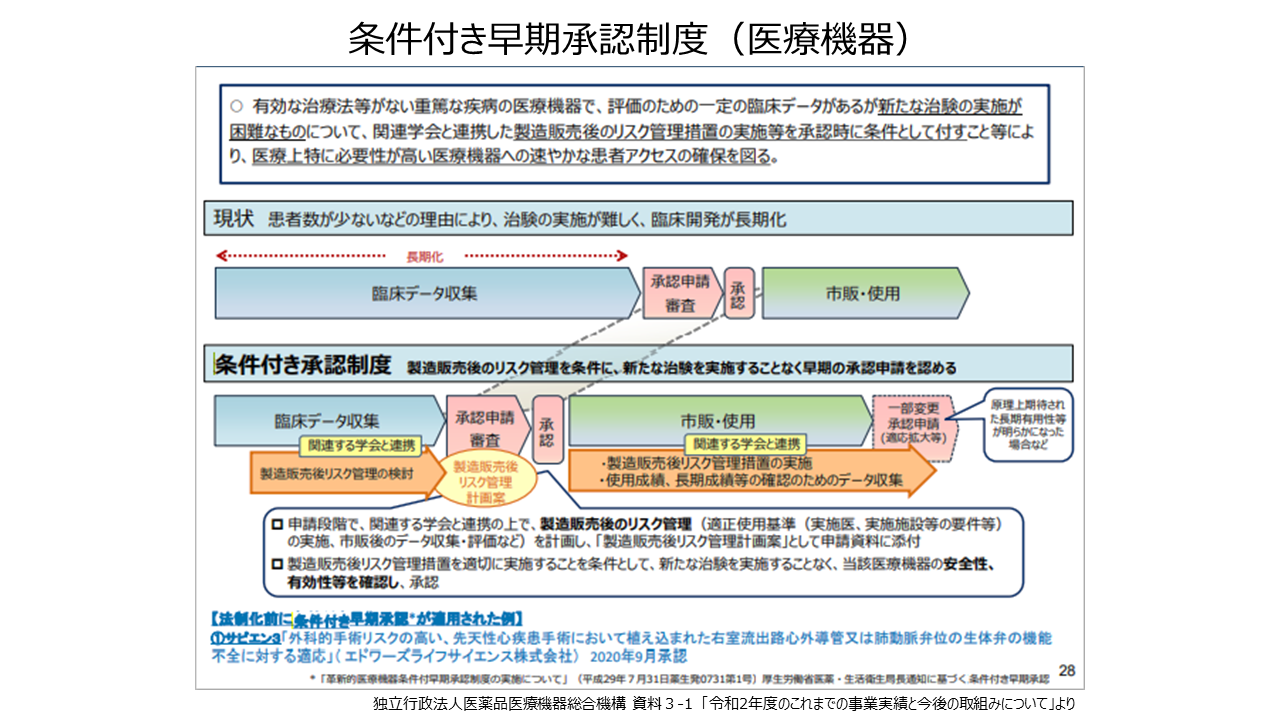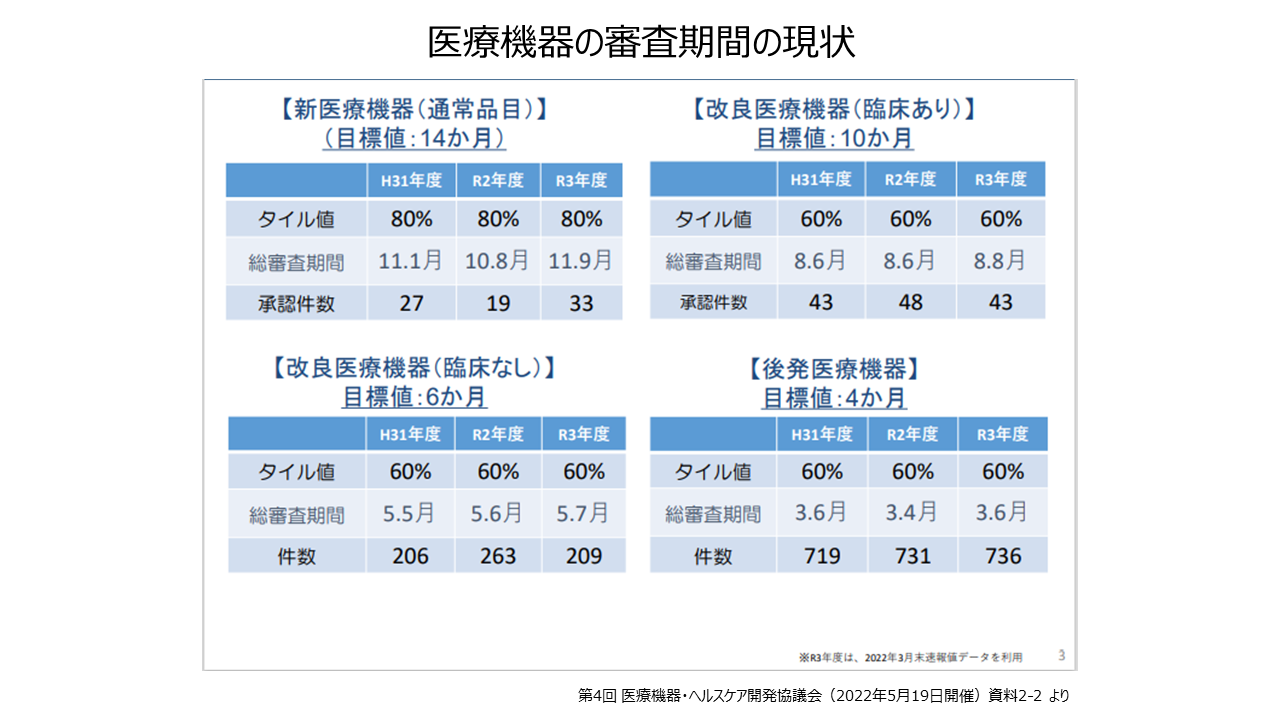
Publication date: 2023.01.06
Following on from the previous article on the regulatory approval system for pharmaceuticals, this time we will introduce the regulatory approval system for medical devices based on recent trends.
In order to distribute medical devices in the market, the classification of medical devices stipulated in the Pharmaceuticals and Medical Devices Act Review, certification and approval procedures are required. Approval and certification of medical devices are given after examining whether the medical devices to be manufactured and sold have no problems as medical devices from the viewpoint of quality, efficacy, safety, etc.
Medical equipment can be broadly divided into 4 types: (1) prevention (examination), (2) diagnosis, (3) treatment, and (4) rehabilitation. (1) Electrocardiographs, sphygmomanometers, blood test devices, etc., as preventive (examination) devices. (2) Diagnostic equipment includes endoscopes, X-ray equipment, ultrasonic diagnostic equipment, X-ray CT, MRI, and PET. (3) Treatment devices include laser scalpels, pacemakers, artificial hearts, stent grafts, artificial dialysis machines, artificial heart-lung machines, and artificial femoral heads. (4) Rehabilitation equipment includes automatic traction equipment, microwave treatment equipment, and massage equipment. These medical devices are subject to the Pharmaceuticals and Medical Devices Law, but surgical masks and plastic gloves used in medical settings are treated as miscellaneous goods (miscellaneous goods) and are not subject to the Pharmaceuticals and Medical Devices Law.

Classes according to the Pharmaceuticals and Medical Devices Law are classified according to the degree of risk of medical devices to the human body. The required procedures differ for each class. General medical devices (international classification: Class I) are considered to have extremely low risk to the human body even if a malfunction occurs. , absorbent cotton, X-ray intensifying screens, and dental impression materials. Manufacture and sale of these devices can be started when notification is submitted to the Pharmaceuticals and Medical Devices Agency (PMDA). Controlled medical equipment (Class II) is considered to pose a relatively low risk to the human body even if a malfunction occurs. meter, dental metal, etc. When manufacturing and selling these devices, it is necessary to apply for and obtain certification from a private third-party certification body registered by the Minister of Health, Labor and Welfare.
Specially controlled medical devices are divided into Class III and Class IV. Class III is considered to pose a relatively high risk to the human body if a malfunction occurs. instruments, ophthalmic microcatheters, etc. Class IV devices are highly invasive to the patient and may directly lead to life-threatening problems in the event of malfunction, including implantable cardiac pacemakers, coronary stents, and aortic stent grafts. These devices will need to be submitted to the PMDA for approval. PMDA reviews the quality, efficacy, and safety of medical devices, consults and reports to the Pharmaceutical Affairs and Food Sanitation Council, and then receives pharmaceutical approval from the Ministry of Health, Labor and Welfare.
In addition, the PMDA defines application categories as (1) new medical devices (obviously different in structure, method of use, effect, and performance from medical devices that have already been approved for manufacturing and marketing), and (2) improved medical devices (new or generic medical devices). 3) Generic medical devices (substantially equivalent to approved medical devices in terms of structure, method of use, efficacy, and performance).

Attachments required for review include specification settings, stability, efficacy, risk analysis, manufacturing methods, clinical trial results, etc. some materials are unnecessary).
For medical devices for serious diseases for which there is no effective treatment, and although there is a certain amount of clinical data, it is difficult to conduct new clinical trials due to reasons such as a small number of patients. There is a "conditional early approval system" to ensure prompt patient access by attaching conditions such as the implementation of risk management measures to approval at the time of approval. The Edwards Sapien 3, a balloon-expandable prosthetic heart valve, has been applied for TPVI (transcatheter pulmonary valve therapy) for retreatment of valved conduits and surgical tissue valves implanted at the pulmonary valve position. I'm here. Recently, AI-based medical devices (endoscopic image diagnosis support software) and behavior modification apps (systems to assist in the treatment of smoking cessation) have also been developed. I'm here.

The annual number of approvals for medical devices in 2021 is 33 for new medical devices (regular products), 43 for improved medical devices (with clinical trials), 209 for improved medical devices (without clinical trials), and 736 for generic medical devices. It is a matter.
The review period is 11.9 months (80% tile value) for new medical devices and 3.6 months (60% tile value) for generic medical devices. The number of approvals for programmed medical devices with behavior modification increased from 9 in 2015 to 36 in 2019.
Shortening the time required for the commercialization of medical devices will not only benefit the patients who are waiting for them, but it will also be a positive factor for companies to advance their businesses.

MEDIUS Group is developing a business centered on the sale of medical equipment. We (Medical + us) involved in medical care also want to play the role of an information source (Media) that delivers useful information for the medical field and people's healthy tomorrow.